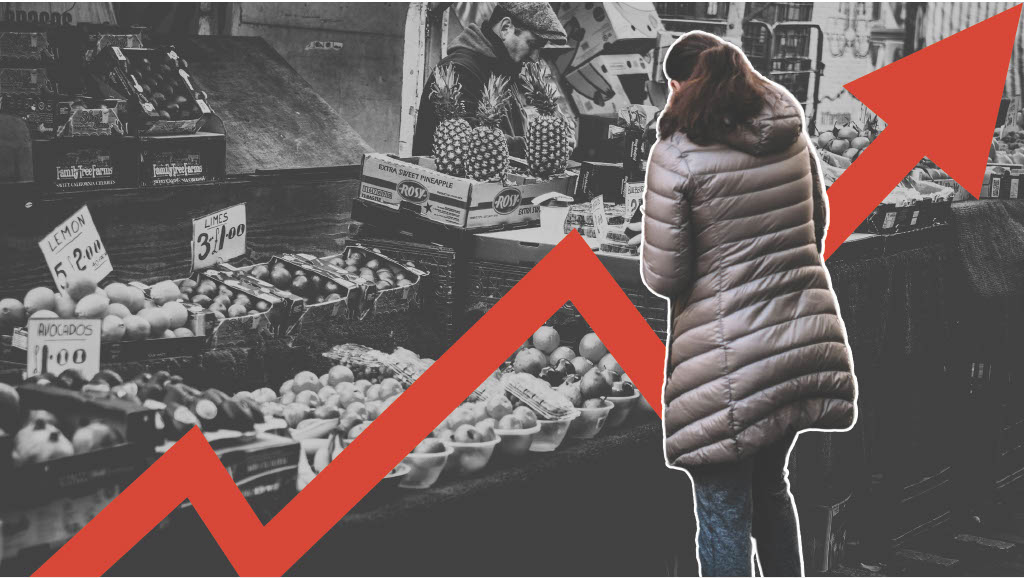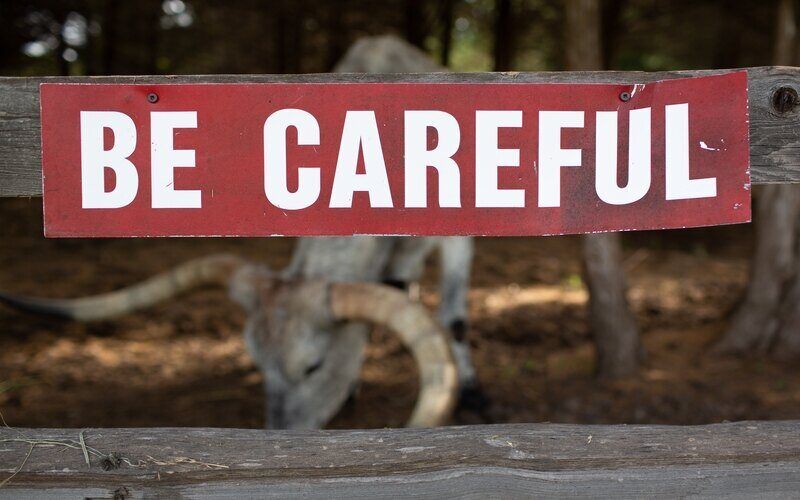What is life without a little deviation from the straight and narrow?
In June 2024, the InfoChoice ‘State of Aussies’ Savings' survey asked more than 1,000 everyday Australians all manner of questions about their saving and spending habits.
It also delved into whether respondents spent money on vices and was so bold as to ask what they were.
More than half (55.1%) reported they did spend on vices with the remaining 44.9% saying they did not. We’ll have to take their word for it.
Let’s dive into the data.
Vice spending by age group
It seems more Gen Xers (those born between 1965-1980) are spending on vices than any other age group with 57.8% saying they do so.
They’re followed by Millennials (56%) with Gen Zs (born 1997-2012) leading the most pristine lives with only 51.6% indulging in vices - or admitting to it.
Here are the figures:
|
Do you spend money on vices? |
Total |
1946-1964 |
1965-1980 |
1981-1996 |
1997-2012 |
|---|---|---|---|---|---|
|
Yes |
55.1% |
53% |
57.8% |
56% |
51.6% |
|
No |
44.9% |
47% |
42.2% |
44% |
48.4% |
We’re somewhat dubious that nearly half the adult population are abstaining from fast food, alcohol and all manner of other vices, so for the sake of simplicity, the rest of this article will exclude those liars who answered ‘no’ from the sample.
Thus, all percentages expressed below are of the 55.1% that answered ‘yes’.
Which vices are Aussies spending on?
This is where it gets interesting.
Overwhelmingly, alcohol was the single biggest vice for everyone who reported having one with more than three in four (77.3%) Baby Boomers (born 1946-1964) admitting they like a tipple.
Fast food was the next most popular vice, with more than three in four Gen Zs indulging compared to just over a third of Baby Boomers.
Smoking/vaping came in at third place, more popular with Gen Zs (30.9%) than any other generation.
Gen Xers were least likely to spend their money on tobacco or vapes with only one in five (20.1%) having smoking as a vice they spend on.
Young people also had the greatest fondness for gambling with more than one in four (25.8%) spending money on this activity.
Adult entertainment was most popular with Millennials (7.9%), followed by Gen Xers (5.4%), but the lure dropped right off for Baby Boomers, with only 1% admitting to spending money on this vice.
Body modifications, such as tattoos, plastic surgery, and facial fillers, were by far the most popular among Gen Zs with one in five (20.6%) reporting they indulged in them.
Younger people were also more likely to be spending on drugs and weapons than older respondents.
For those who responded ‘Other’, their reported ‘vices’ were video games, coffee, or restaurants which didn’t really count as vices for the purposes of the survey. You’ve got to have a little fun somewhere.
See the full survey breakdown for the vices Aussies spend on, by age group:
|
Which vices do you spend on? |
Total |
1946-1964 |
1965-1980 |
1981-1996 |
1997-2012 |
|---|---|---|---|---|---|
|
Alcohol |
71.6% |
77.3% |
73.2% |
68.5% |
70.1% |
|
Smoking/Vaping |
24.9% |
25.8% |
20.1% |
25% |
30.9% |
|
Gambling |
22.9% |
15.5% |
23.5% |
24.5% |
25.8% |
|
Fast Food |
61.9% |
36.1% |
60.4% |
68.5% |
75.3% |
|
Drugs |
4.1% |
0% |
2.0% |
6.5% |
6.2% |
|
Adult Entertainment |
5.2% |
1.0% |
5.4% |
7.9% |
3.1% |
|
Weapons |
1.4% |
0% |
0.7% |
1.9% |
3.1% |
|
Body Modifications (e.g. tattoos, plastic surgery, etc.) |
8.2% |
1.0% |
4.7% |
8.3% |
20.6% |
|
Other |
1.8% |
2.1% |
2.0% |
1.9% |
1.0% |
Source: InfoChoice State of Aussies' Savings Survey, July 2024. Expressed percentages are of those that answered ‘yes’ to the question: Do you spend money on any vices?
Vices by gender
When it comes to the gender divide, women were less likely to be spending on vices (or admitting to it) with less than half (49.8%) of women saying they were doing so compared to 59.9% of men.
But women were almost three times more likely to report spending on body modifications than men (13% vs 4.7%) and were a little more indulgent when it came to fast food (65.7% vs 59.1%).
However, men were three times more likely to spend money on gambling (32.2% vs 10.9%), eight times more likely to be buying drugs (6.6% vs 0.8%), and more than ten times more likely to spend on adult entertainment (8.4% vs 0.8%).
Vices by income
The survey also endeavoured to learn whether income had any bearing on what vices people were spending on.
It found those in the highest income band were far more likely to be spending on drugs than those earning lower incomes, in fact almost twice as likely as the next highest contingent.
Those in the highest income band were also more likely to be spending on alcohol and adult entertainment.
Interestingly, the likelihood of spending on alcohol increased in line with earnings.
Meanwhile, respondents in the lowest two income bands (with annual taxable incomes less than $45,000) were far more likely to be smoking or vaping, suggesting the federal government tax on tobacco products disproportionately affects lower income earners.
Lower income earners were also far more likely to be spending on body modifications such as tattoos and plastic surgery than those on higher incomes.
Below is the data showing spending on vices by annual taxable income:
|
Total |
$0-$18,200 |
$18,001- $45,000 |
$45,001- $135,000 |
$135,001- $190,000 |
$190,001 and over |
|
|---|---|---|---|---|---|---|
|
Alcohol |
71.6% |
60.4% |
64.7% |
72.8% |
73.7% |
86.5% |
|
Smoking/Vaping |
24.9% |
41.7% |
29.4% |
24.3% |
10.5% |
20.7% |
|
Gambling |
22.9% |
4.2% |
16.5% |
25.2% |
31.6% |
24.3% |
|
Fast Food |
61.9% |
54.2% |
55.3% |
65.2% |
59.2% |
64.9% |
|
Drugs |
4.1% |
2.1% |
7.1% |
2.6% |
3.9% |
13.5% |
|
Adult Entertainment |
5.2% |
4.2% |
2.4% |
4.2% |
9.2% |
13.5% |
|
Weapons |
1.4% |
4.2% |
3.5% |
0.3% |
2.6% |
0.0% |
|
Body Modifications (e.g. tattoos, plastic surgery, etc.) |
8.2% |
8.3% |
14.1% |
8.9% |
1.3% |
2.7% |
|
Other |
1.8% |
4.2% |
1.2% |
1.6% |
1.3% |
2.7% |
Source: InfoChoice State of Aussies' Savings Survey, July 2024. Expressed percentages are of those that answered ‘yes’ to the question: Do you spend money on any vices?
How does the survey compare with official figures?
The InfoChoice ‘State of Aussies’ Savings' survey is in pretty much in line with official Australian Bureau of Statistics (ABS) data on household spending on alcohol and tobacco.
The Australian Institute of Health and Welfare (AIHW) used the latest ABS data to report on the use of alcohol, tobacco, and other drugs in Australia, updated in July 2024.
It found households with employee income spent a higher proportion on alcohol compared to households where the main source of income was government pensions.
However, households with lower incomes in the form of pensions had more than double the spending on tobacco.
Taking a wider view, the federal government report found the proportion of household spending on alcohol had decreased considerably in more recent times, down to 2.2% in 2015-16 compared to 3.4% in 1984.
It found the expenditure on tobacco products had also halved over the same time period, down to 0.9% from 1.6% in 1984.
Rise in vaping
However, those figures don’t take into account the recent increase in the popularity of vaping, particularly among younger Australians.
AIHW found while less than 10% of people in Australia were smoking daily, the use of so-called e-cigarettes tripled between 2019 and 2022-23 with more than one in five people (21%) aged between 18-24 saying they were currently vaping.
That was well up from just 5.3% in 2019.
The ABS has collected data on vaping and the use of e-cigarettes but does not currently include them in its household spending figures which covers alcoholic beverages and tobacco.
The InfoChoice survey, which shows Gen Zs are the biggest spenders on smoking and vaping, adds to the growing body of evidence that vaping has become more prolific among Australia’s younger generations.
The financial implications of this are yet to be fully understood as are vaping's long-term health effects which perhaps illustrates when one vice loses its lustre, there will be others to fill the gap.
Image by Kelsey Chance on Unsplash



 Emma Duffy
Emma Duffy
 Rachel Horan
Rachel Horan













